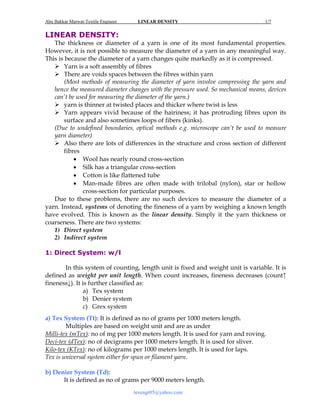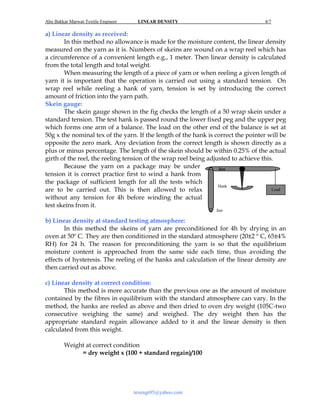The document discusses linear density, which is a measurement of yarn thickness or fineness. It is not possible to directly measure yarn diameter due to its soft and compressible nature. Instead, linear density systems weigh a known length of yarn to determine fineness. The two main systems are direct, which fixes length and varies weight, and indirect, which fixes weight and varies length. Several linear density designation systems are described, including tex, denier, English count, and their respective calculation methods. Factors like moisture content and different fiber properties are accounted for in linear density measurements.






